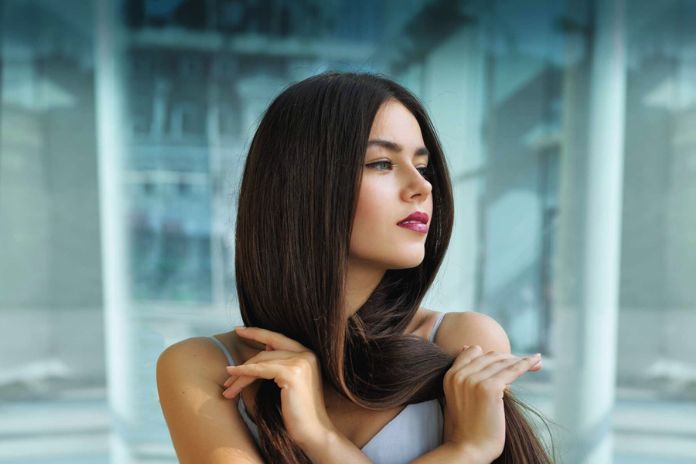Keratin: Everyone knows this term. But what does it mean exactly? And why is it essential?
Keratin: Definition And Presentation
From the Greek “keras”, the horn, Keratin is a water-insoluble protein that waterproofs our skin and appendages (nails, hair and hair). It also absorbs melanin, which pigments the skin from UV rays. But we are not the only living beings to have Keratin: thus, the rhinoceros horn is made of it. Hooves and beaks from the animal world are also included.
All mammals have alpha keratin, while reptiles and birds have even stronger beta keratin. In humans, it is produced by keratinocytes, cells of the deep epidermis. A distinction is made between exoneration (those of body hair and hair) and cytokeratin, which supports the skin. They are the ones that serve as cancer markers because they are the symptom of the weakening of certain tissues: skin cancers and, for example, ovarian or gastrointestinal cancers.
keratin And Hair
It is 95% of the raw material of our hair. The cell in our body reproduces the fastest: in the hollow of the hair follicle, the keratinocytes are renewed every 24 to 72 hours. The newer ones skin the older ones, which become dead cells. As they harden, they are evacuated by the hair follicle: here is our hair!
Our hair is therefore made up of dead cells, which explains why we can comb it, tie it up and cut it without hurting ourselves. This does not mean you should not care for them to avoid damaging them. Our hair’s Keratin comprises three parts: the cuticle is the outer envelope. It is made of scales, which fit together like tiles on a roof. Their good interweaving allows the hair to grow. And protects them from moisture at the same time as preserving water. When you dye your hair, the part between these plates takes on the color.
If you have straight or curly hair, it is due to the cortex, the inner part of the hair. Also, Keratin is made of a double twist, vertical and horizontal, this one held by “bridges’ ‘. It is these bridges that give your hair its shape. They are rich in cysteine, zinc and vitamin B6: you recognize what is written on the products touting good health for your hair!
The marrow, the central part of the hair, is useless despite its name. Let’s say it’s the centre pipe, but that’s it. In summary, Keratin is the elasticity, strength and shine of your hair: it is thanks to it that it reflects light, swells with brushing and becomes a curl under the curler. On the contrary, a defect in this protein weakens them: they become thinner, brittle and dull.
Keratin And Skin
The skin is dry and dull, the nails brittle: you lack Keratin. Conversely, hyperkeratosis is an excess of it: either by reflex of the body or by imbalance. Played too much with tools or walked barefoot? Your skin protects itself with these calluses, which are Keratin. Drop the hammer or spade, and put on the sandals.
But if you’ve done neither but have redness around one hair (come on, two…), that’s keratosis pilaris. No big deal, just unsightly. On the other hand, hyperkeratosis in the form of a plaque or even a shell is the classic sign of psoriasis, which is chronic and deserves consultation. Psoriasis is, along with seborrhoea, the most common scalp condition.
Keratin And Cancer
Cytokeratins mutate with the appearance of certain cancers. These proteins form a network of filaments that support the tissues. In cancer, the body produces antibodies against these mutant cytokeratins. An early warning of tumor genesis. As for the Keratin sold to straighten the hair would not be insignificant: manufacturers cram a bit of everything into the so-called Keratin.
Not only the hooves of slaughterhouse animals, poultry feathers, eggshells, sheep’s wool, etc. A real trash can. So much so that it is advisable to opt for vegetable keratin, produced from wheat, soya, and corn: which does not completely reassure and is a shame, this protein being in its natural state, of animal origin.
Uses
Keratin And Man
Male hair is also 95% of Keratin, with the difference that males are predisposed to losing their hair with age. Brazilian straightening transforms frizz into a handsome male lock. Two small precautions to take: never apply Keratin against the scalp, at the risk of burning it. And avoid Brazilian straightenings containing formalin, which promotes hair loss.
This protein can also promote the formation of dandruff. You have been warned. Now, apply it to your hair, and pass the straightening iron, which will make it penetrate there. And no shampoo for a day so as not to eradicate the operation. That’s it; you’re even more beautiful!
Keratin And Woman
Brazilian straightening is also for women: it lasts longer than brushing, almost a month, which is okay. Protection and maintenance of the hair are required. In practice, it is suitable for all hair types. Among the precautions to take, avoid other sulfate-based products, which alter the effect of Keratin. And then, it smells a little like pesticides! Also, do your Brazilian reading when you return from vacation, especially if you go to the sea.
Is Keratin A Cure?
Alternate a keratin shampoo to nourish your hair with a mild shampoo properly. You will feed them without excess. And can thus make the cure last. If you have a colour, do not force the Brazilian smoothing. And, in any case, washing your hair too often is bad for them. Let them breathe, even if they are rebellious.
Organic Keratin?
In all the panoply of keratin repair shampoos, opt for vegetable keratin, free of sulfates, silicones and parabens. No advertising, but you spot the brands yourself. They also contain Macadamia oil, sweet orange oil and aloe vera extract. Anything good.
Keratin: Its Price
The price? Twenty euros for 250 ml.
Read Also: How To Have Beautiful Skin And Preserve Its Youth
